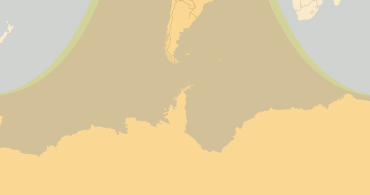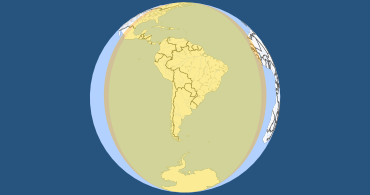Is this transit visible in Maastricht?
Where to See the Transit
Try our new interactive eclipse maps. Zoom in and search for accurate eclipse times and visualizations for any location.
Where to See the 2125 Venus Transit
Regions seeing at least some parts of the transit: Europe, West in Asia, South in Australia, Africa, North America, South America, Pacific, Atlantic, Indian Ocean, Antarctica.
Is this transit visible in Maastricht?
Who Can See the Transit
Shades of darkness
Night
Astronomical Twilight (Sun is 12 - 18 degrees below the horizon)
Nautical Twilight (Sun is 6 - 12 degrees below the horizon)
Civil Twilight (Sun is 0 - 6 degrees below the horizon)
Day
Entire transit visible
Parts of transit visible (Sun rises or sets during transit)
Transit not visible
When the 2125 Venus Transit Happens Worldwide — Timeline
Planet transits are normally visible from all locations where the Sun is up. However, because of different viewing angles, the start and end times can vary by a few minutes. The times below are actual times (in UTC) when the transit is visible.
| Eclipse Stages Worldwide | UTC Time | Local Time in Maastricht* |
|---|---|---|
| First location to see the partial transit begin | 8 dec 13:08:49 | 8 dec 14:08:49 |
| Geocentric** partial transit begins (ingress, exterior contact) | 8 dec 13:17:23 | 8 dec 14:17:23 |
| First location to see the full transit begin | 8 dec 13:31:33 | 8 dec 14:31:33 |
| Geocentric** full transit begins (ingress, interior contact) | 8 dec 13:40:50 | 8 dec 14:40:50 |
| Venus is closest to the Sun's center | 8 dec 16:04:02 | 8 dec 17:04:02 |
| Geocentric** full transit ends (egress, interior contact) | 8 dec 18:27:15 | 8 dec 19:27:15 |
| Last location to see full transit end | 8 dec 18:36:32 | 8 dec 19:36:32 |
| Geocentric** transit ends (egress, exterior contact) | 8 dec 18:50:42 | 8 dec 19:50:42 |
| Last location to see partial transit end | 8 dec 18:59:16 | 8 dec 19:59:16 |
* These local times do not refer to a specific location but indicate the beginning, peak, and end of the eclipse on a global scale, each line referring to a different location. Please note that the local times for Maastricht are meant as a guideline in case you want to view the transit via a live webcam. See the actual times the transit is visible in Maastricht.
** The geocentric times refer to a theoretical situation where the transit is viewed from the Earth's center. They are used to provide an approximately average time schedule for astronomical events. Because of varying perspectives, observers on the Earth's surface will experience the transit at slightly different times depending on their location.
Geocentric duration of this Venus Transit is 5 hours, 33 minutes, 19 seconds.
Transits and eclipses visible in Maastricht
Previous Mercury Transit was on 15 nov 2124.

